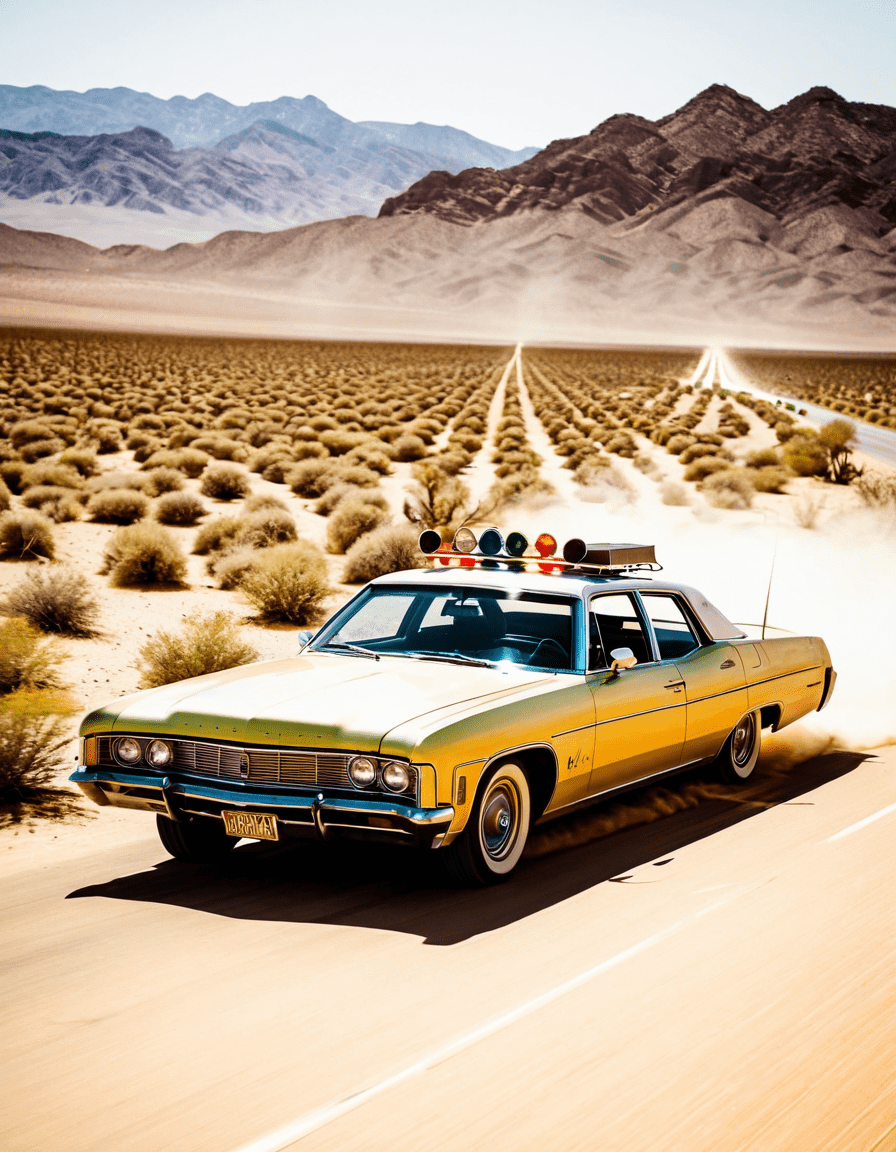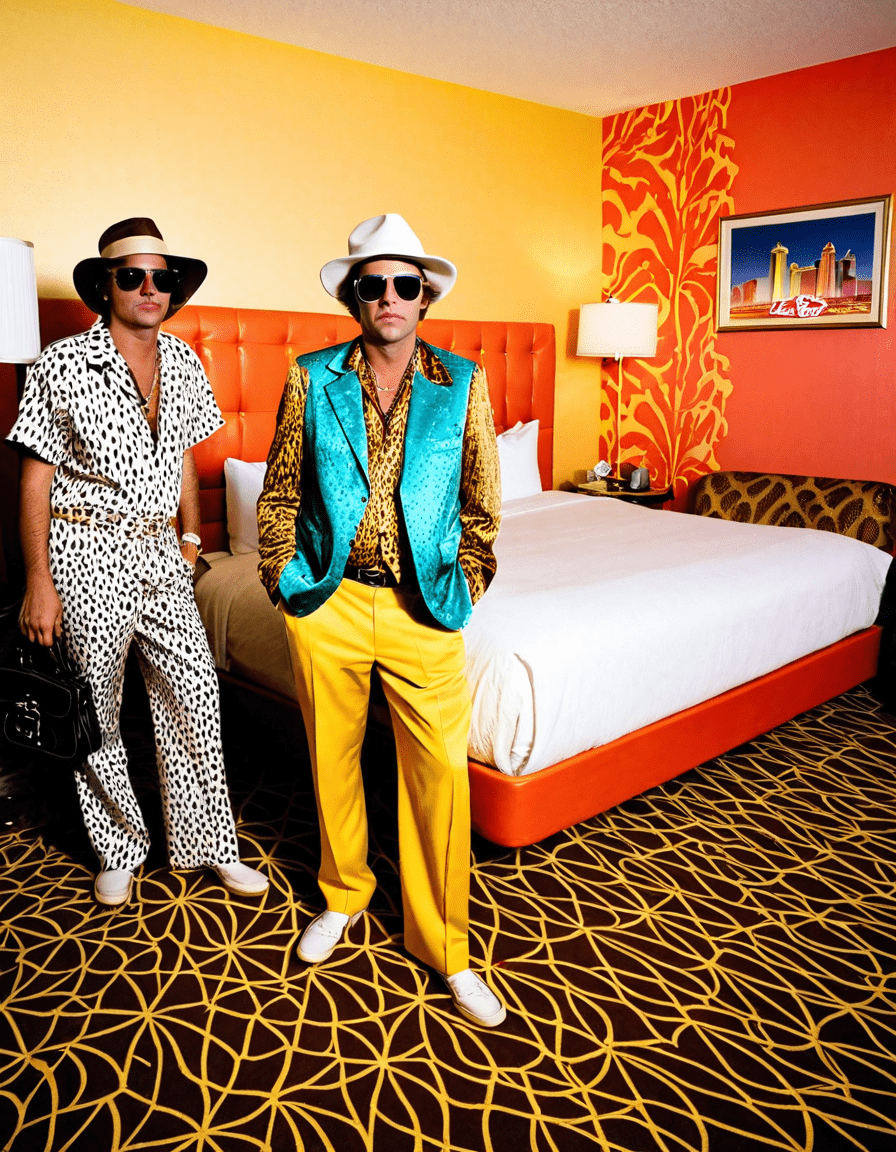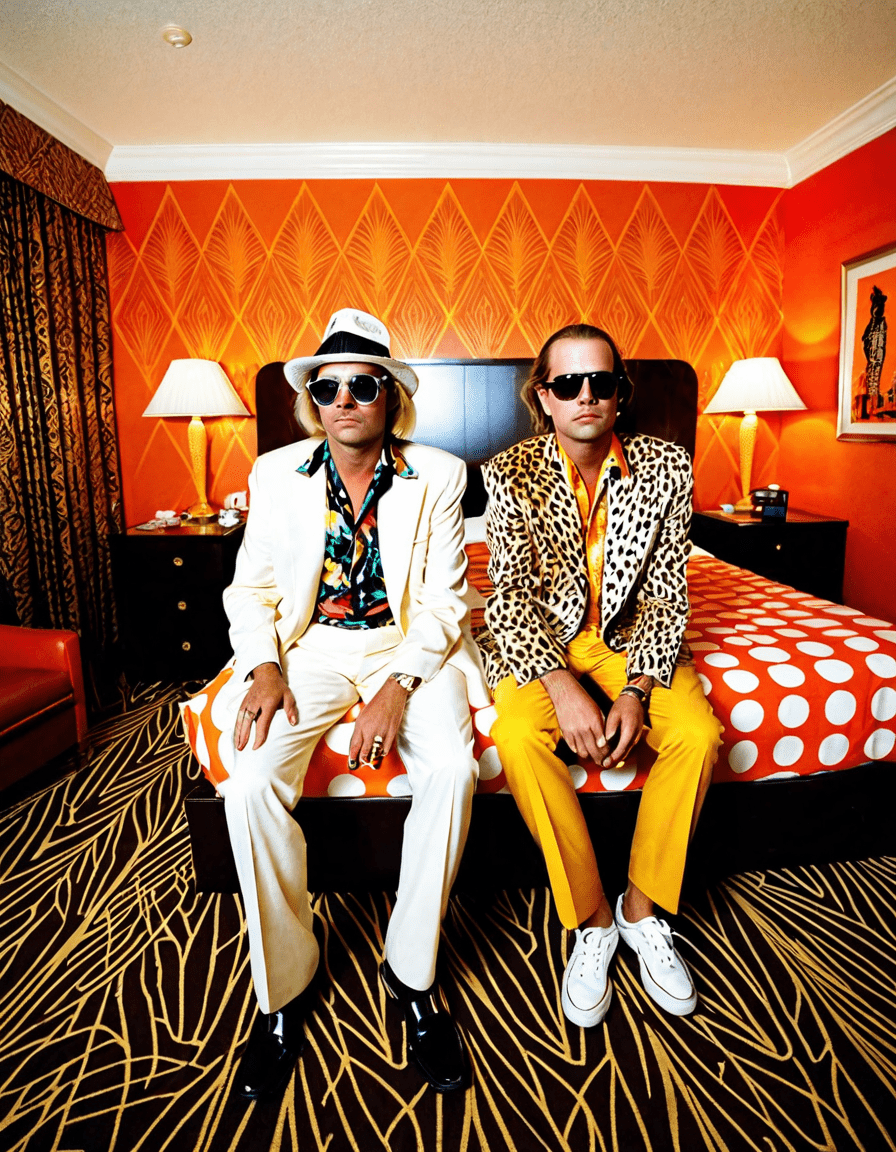In the pantheon of cinematic masterpieces, few films encapsulate the chaos of the human psyche like Fear and Loathing in Las Vegas. Directed by Terry Gilliam and based on Hunter S. Thompson’s seminal work, the movie invites viewers into a kaleidoscopic world filled with psychedelic experiences, existential dread, and a madcap quest for the American Dream. As the 2026 film landscape continues to evolve, reflecting on this iconic film reveals both its timelessness and its relevance in contemporary culture.
The 7 Wild Themes Explored in Fear and Loathing in Las Vegas
Fear and Loathing in Las Vegas starkly critiques the disillusionment that defines the American Dream. Raoul Duke, portrayed by Johnny Depp, and Dr. Gonzo, played by Benicio del Toro, embark on a quest that ultimately showcases how far this dream can stray from its idealistic roots. Their journey resonates with modern offerings like Money Heist, which explores how wealth can oversimplify life’s complexities, shedding light on the futility of pursuing hollow aspirations.
Gilliam’s depiction of drug culture paved the way for a plethora of films exploring altered states. The chaotic surrealism seen in Fear and Loathing can be likened to the psychological dissonance depicted in Deepwater Horizon, where characters confront intense, changing realities that challenge their perceptions. These narratives urge viewers to recognize that reality can often be more complex than it seems.
This film acts as a reflection on the 1960s idealism while paralleling themes in shows like Hell of a Summer. Both the film and series underline the uncomfortable truths that lurk behind efforts for social liberation, revealing that the quest for freedom often leads to disillusionment. Duke and Gonzo’s misadventures stand as a testament to how great aspirations can fizzle into misguided chaos.
The characters Duke and Gonzo embody conflicting identities, mirroring the duality found in From Dusk Till Dawn. Their journey blurs the fine line between sanity and madness, asking profound questions about self-perception and truth in an environment wrought with deception. Such explorations of identity resonate deeply, reminding us of our own complexities as we navigate through life.
The film masterfully captures an overwhelming sense of paranoia akin to the tense atmosphere in Murder in a Small Town. Both narratives delve into the darker aspects of human nature, illustrating how seemingly simple settings can conceal deeper societal issues. Gilliam’s vision throws viewers into a whirlwind of chaotic conspiracies that highlight the fragile nature of trust and understanding in our lives.
Paralleling Sleepless in Seattle, Fear and Loathing lays bare the vulnerabilities of isolation. Duke and Gonzo’s wild escapades present the alienation they experience amidst the chaos of Las Vegas. Their frantic search for any connection, rather than the glamorous distractions of the Strip, resonates with audiences—especially those who feel isolated despite being in a crowded world.
Similar to Money Heist, both works critique the overbearing influence of media in shaping perceptions and realities. The surreal landscape of Fear and Loathing in Las Vegas underscores how narratives can distort truth, echoing contemporary discussions around misinformation and viral media. In today’s world, where information can fly at breakneck speed, this critique of media’s power remains as relevant as ever.

The Lasting Impact of Fear and Loathing in Las Vegas
The technical mastery of Fear and Loathing in Las Vegas stands as a benchmark for filmmaking innovation. Terry Gilliam’s distinctive style marries visual splendor with a riveting narrative that immerses audiences in the tumultuous minds of its protagonists. The film’s legacy influences aspiring filmmakers and those who explore themes like madness, identity, and the human condition in bold new ways.
As social commentary continues evolving, Fear and Loathing serves as a poignant reminder of the cyclical nature of societal disillusionment. The film’s insights into the human psyche and frenetic pacing cultivate newfound appreciation for how art can serve both as a mirror and critique of society. These elements create a dialogue, urging us to examine our own journeys amidst the chaos of existence.
Taking a step back and reflecting on the film’s themes can lead to deeper conversations about our shared experiences. As we grapple with everything from digital disillusionment to the ongoing search for genuine human connection, Fear and Loathing in Las Vegas remains a striking exploration of what it means to feel lost while chasing fulfillment. The wild journey into madness it presents serves both as entertainment and a cautionary tale—a potent blend that stirs viewers long after the credits roll.
So, whether you’re a film fanatic or just dabbling in the beautiful mess of cinema, Fear and Loathing in Las Vegas remains a thrilling ride you won’t want to miss. Get comfy, grab some popcorn, and prepare for one unforgettable adventure into the depths of madness!
Fear and Loathing in Las Vegas: A Wild Trip into Madness

A Mad Adventure
“Fear and Loathing in Las Vegas” isn’t just a film; it’s a bizarre excursion into the psyche of America in the ’70s. Did you know that the movie is based on Hunter S. Thompson’s novel, which he described as a blend of journalism and surrealism? This unique narrative style helped cement Thompson as a madcap genius. Speaking of madness, the film’s psychedelic visuals can sometimes feel as chaotic as trying to decipher the motives of Lee Harvey oswald. The fever dream atmosphere is further heightened in scenes that resemble a twisted version of the jackpot movie experience, leaving viewers both bewildered and entertained.
Crazy Characters
One of the most memorable aspects of “Fear and Loathing in Las Vegas” is its wild array of characters. Thompson’s alter ego, Raoul Duke, represented a counter-culture spirit that resonates even today, especially among fans of pop culture’s eclectic personalities like DJ Khaled. Each character is as colorful as the cereal Mascots we grew up with, making their outrageous antics even more absurd. Did you know that many fans relate to Duke’s journey not just for its entertainment value but also for its commentary on society’s surreal tendencies? It’s a wild ride from start to finish!
Behind the Madness
The film doesn’t shy from dealing with deeper themes, either. The visual metaphor of Backcountry gear as a means of survival is prevalent throughout both Thompson’s writing and in the film. But it’s not just about the trip itself; it’s also about how one navigates through life’s twisted landscapes. From the dialogue to the outrageous scenarios, every detail works in harmony to capture the chaotic spirit of the era. Much like the high-octane energy found in an episode of “The Golden Bachelorette, this film digs into what lies beneath the surface—in life and in Las Vegas.
So if you’re ready to dive into this madcap journey, grab your popcorn (maybe with a twist of a Theraband workout between screenings) and strap in for a film that’s as intoxicating as the journey itself. Whether you’re a first-time viewer or a seasoned veteran of odd cinema,Fear and Loathing in Las Vegas” offers endless layers of intrigue worth exploring.



![[PV]Let Me Hear/Fear, and Loathing in Las Vegas](https://www.cinephilemagazine.com/wp-content/cache/flying-press/2d4225fd7a4a80e8c585a8108e051150.jpg)
![[PV]Just Awake (English ver)/Fear, and Loathing in Las Vegas](https://www.cinephilemagazine.com/wp-content/cache/flying-press/0961115b45d1d49760ba3f5f2b8398cc.jpg)



